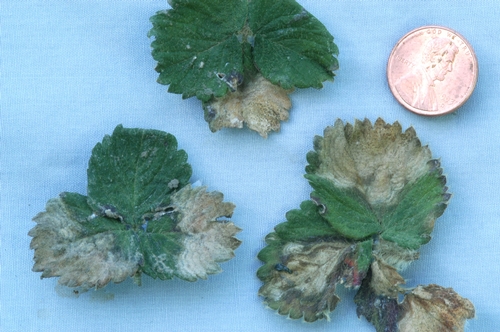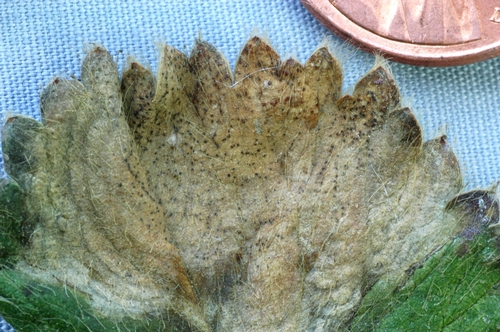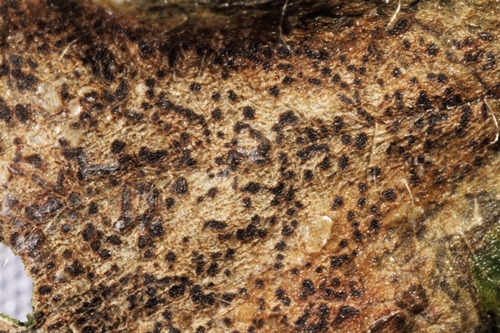by Steven Koike, UCCE
Leaf blotch disease of strawberry is being detected in some fields in coastal California this winter. Dependent on splashing water, this disease rarely occurs unless overhead sprinklers are used or rains occur. Symptoms generally consist of tan to gray leaf lesions that commonly (though not exclusively) develop along the margin or edge of the leaflets. Leaf blotches are irregular in shape and may be surrounded by a purple border. These affected areas tend to grow fairly large; they can expand and cover from 1/4 to 1/2 of the leaflet surface.
A key diagnostic feature of leaf blotch is the presence of tiny, brown to black, fungal fruiting bodies in the gray blotches. Brown to black petiole lesions can also occur. In past seasons leaf blotch has been misdiagnosed as spray burn or phytotoxicity from applied chemicals. If uncertain about the nature of such leaf symptoms, submit samples to the UC Cooperative Extension offices in the coastal counties.
Leaf blotch disease is caused by the fungus Gnomonia comari, which also has the name Zythia fragariae. Zythia fragariae survives on strawberry crop residues. The fungus does not appear to be a true soilborne fungus, so it will not likely persist in soil unless strawberry crop debris is present. The Zythia form is especially dependent on splashing water for spore dispersal and infection. This accounts for the typical appearance of leaf blotch during winter and early spring seasons when there are rains. Leaf blotch is usually considered a minor problem and fungicide treatment programs have not been developed nor are they generally recommended. The strawberry plants usually grow out of the problem. Leaf blotch spread and development is dependent on rains and splashing water, so once the winter rains cease, leaf blotch usually becomes a non-issue for growers.
Attached Images:


